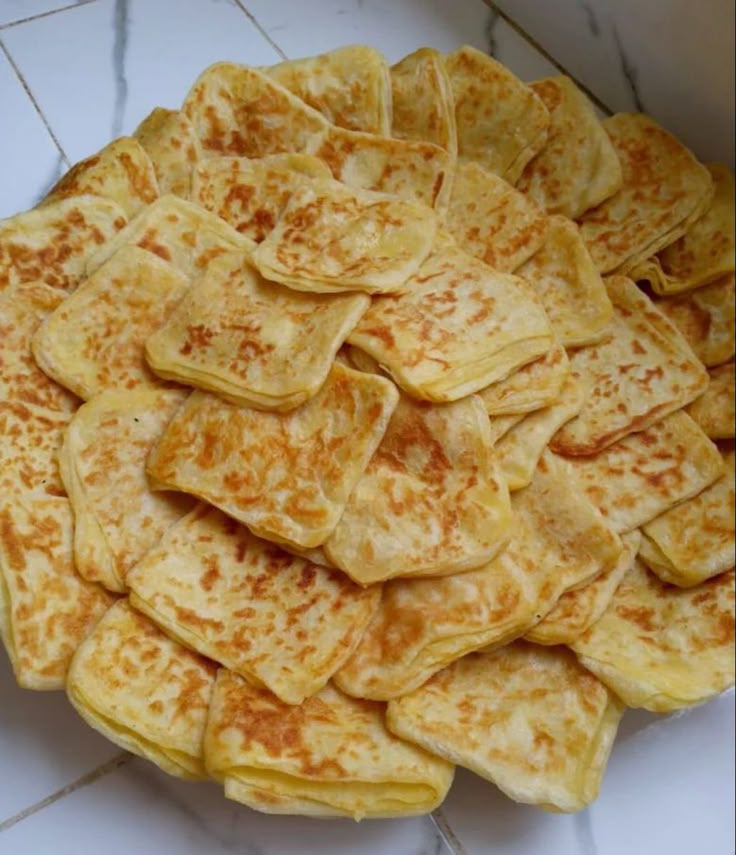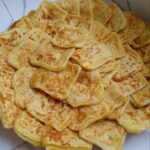
Moroccan Msemmen is a traditional North African layered flatbread that’s rich in culture, flavor, and culinary technique. Also known as Rghaif, Msemmen is a staple in Moroccan households, often served at breakfast or tea time with honey and butter or stuffed with savory fillings like onions and spices.
What makes Msemmen special is its unique texture — crispy on the outside and soft, flaky, and chewy inside. While it may look complex due to its layers and folding method, it’s surprisingly simple to make once you get the hang of the technique. Whether you’re new to Moroccan cuisine or a fan of international flatbreads, Msemmen is a must-try that pairs perfectly with mint tea, coffee, or hearty stews.
🧰 Recommended Kitchen Tools
To prepare Moroccan Msemmen at home, you’ll need a few basic tools:
- Large mixing bowl
- Measuring cups and spoons
- Clean countertop or kneading surface
- Non-stick skillet or griddle
- Dough scraper or spatula
- Rolling pin (optional)
- Small bowl for oil mixture
- Pastry brush (optional)
🧾 Ingredients
Yield: 8–10 Msemmen
For the Dough:
- 2 cups all-purpose flour
- 1 cup fine semolina (not coarse)
- 1 tsp salt
- 1 tsp sugar
- 1 tsp dry yeast (optional for a softer texture)
- 1¼ to 1½ cups warm water (adjust as needed)
For the Oil Mixture (for folding and cooking):
- ½ cup vegetable oil
- ¼ cup melted butter
- ¼ cup fine semolina
- Extra flour for dusting
👨🍳 Preparation Method
Step 1: Prepare the Dough
In a large bowl, mix flour, semolina, salt, and sugar. Add yeast if using. Gradually add warm water and knead until you form a smooth, elastic dough. This may take 10–12 minutes by hand or about 6–8 minutes using a stand mixer.
Cover the dough with a damp towel and let it rest for 30 minutes.
Step 2: Divide and Rest
After resting, divide the dough into equal balls (about the size of a golf ball). You should get 8–10 balls. Coat each with a little oil to prevent sticking, cover with a towel, and let rest for another 15–20 minutes.
Step 3: Shape and Fold
Lightly oil your work surface and flatten each dough ball with your hands (or a rolling pin) into a thin circle — as thin as possible without tearing.
Sprinkle a little semolina and drizzle oil-butter mixture over the surface. Fold the dough inward like a letter: first from the left and right, then top and bottom, forming a square packet.
Repeat this process with all dough balls.
Step 4: Flatten Again
Let the folded squares rest for 5–10 minutes, then gently press or roll them into larger squares (about 5–6 inches across), being careful not to tear the layers.
Step 5: Cook the Msemmen
Heat a non-stick skillet or griddle over medium heat. Cook each square for 2–3 minutes per side, flipping once or twice, until golden and crisp on the outside.
Brush lightly with oil or butter as needed while cooking to enhance browning and flavor.
💡 Tips for Success
- Use fine semolina, not coarse, to help create the signature flakiness.
- Resting the dough is key — it relaxes the gluten and makes stretching and folding easier.
- Keep your hands and work surface oiled to prevent sticking while shaping.
- Don’t overcook — too much time on the pan can dry them out.
- Stack under a clean towel as you cook to keep them warm and soft before serving.
🔄 Recipe Variations
1. Stuffed Msemmen (Savory)
Add a filling of sautéed onions, ground beef, and Moroccan spices like cumin, paprika, and coriander before folding the dough into a square.
2. Sweet Msemmen
After cooking, drizzle with honey and melted butter, then sprinkle with crushed almonds or cinnamon sugar.
3. Whole Wheat Version
Substitute up to 50% of the all-purpose flour with whole wheat flour for a slightly nuttier, denser variation.
4. Vegan Msemmen
Skip the butter and use all vegetable oil or vegan margarine for a dairy-free version.
❓ Frequently Asked Questions (FAQs)
Q1: Is Msemmen the same as Rghaif?
Yes! The terms are often used interchangeably. “Msemmen” refers more specifically to the folded, square version, while “Rghaif” can refer to both flat or folded Moroccan breads.
Q2: Can I freeze Msemmen?
Absolutely. Cooked Msemmen freezes well. Let them cool, then stack with parchment paper in between and freeze in an airtight bag. Reheat on a skillet or microwave when ready to serve.
Q3: What can I serve Msemmen with?
Traditionally, Msemmen is served with honey and butter, cheese, or jam for breakfast. It can also be served alongside harira soup, tajines, or used as a wrap.
Q4: Why is my Msemmen tough?
Tough Msemmen usually results from over-kneading, not enough rest time, or overcooking. Make sure to rest the dough properly and avoid high heat.
Q5: Can I make Msemmen without semolina?
While semolina gives the best texture, you can make Msemmen with just flour. The result will be softer and less flaky, but still delicious.
📝 Conclusion
Moroccan Msemmen is more than just a flatbread — it’s a cherished piece of Moroccan culture and hospitality. Whether enjoyed with mint tea at breakfast or stuffed with savory fillings for lunch or dinner, this flaky, crispy, tender bread is endlessly versatile and deeply satisfying.
Making Msemmen at home is an opportunity to connect with North African tradition and impress your family and guests with a handcrafted bread that’s as delicious as it is unique. With a bit of practice and patience, you’ll be folding and flipping like a pro.
Give it a try — and don’t forget the honey and mint tea on the side!





